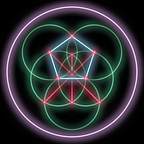The Core Objects of Python
Python has a lot of objects, but all of them are made from a few fundamental types. If you understand those, you’ll understand Python.
In the previous article, we set ourselves up to write python, but we didn’t do anything with it besides print “Hello, World!”. In this article, we’re going to talk about how to actually do things in python. We’re also going to work with the python interpreter.
- Previous Article
- Next Article
- All Articles
If you haven’t read the first article yet, I would strongly suggest reading it so that you have python set up and you’ll understand my conventions like why I keep switching between a Linux terminal and a MacOS terminal.
Quick Note
I accidentally published this story while trying to schedule its publication, so I decided to also publish the first story.
Topics Covered
I don’t want to waste your time, so here’s a list of topics covered. If you understand these topics, feel free to skip this article (and maybe read one of my other articles).
- How
pythonHandles Statements - Experimenting with the Python Interpreter
- Objects
- Numbers: (integer and floating…
